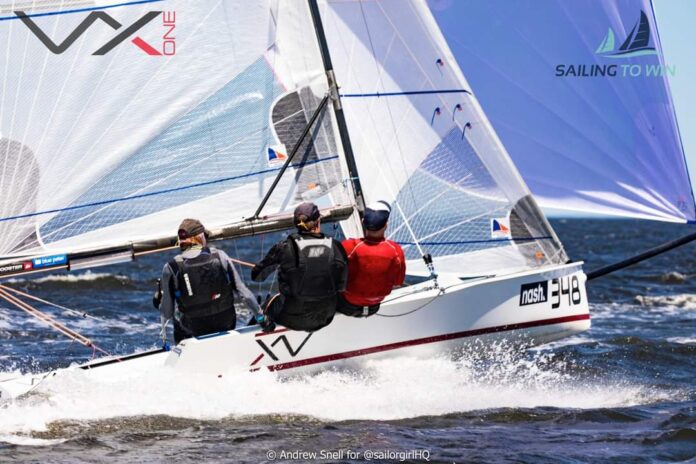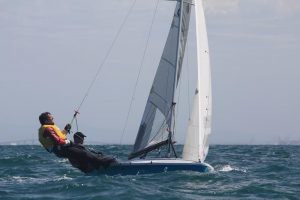
In the excerpts of an interview I conducted below, I am speaking with Sam Haines who has recently joined the ranks of yachting professional sailors and we are going to discuss Essential Training and Practice.
Sam has a vast sailing background and is a qualified sailmaker, working in the industry for 19 years, having had his own loft in Melbourne Australia and until recently, worked with North Sails as their One Design specialist.
Sam started sailing at 7 in a Sparrow and is a member of the famous dinghy Club – Black Rock Yacht Club
Some of he classes Sam has sailed are Etchells, International 505’s, Sydney 38, Laser, OK Dinghy and J/24 and he now spends his time sailing and coaching at the highest level.
Brett: We talked about practice time. How important is practice time, and what percentage of that practice time do you train on your own rather than with another boat?
Sam Haines: So again, the fresh thing in my mind is how I lead up to the Worlds. We did, I would say 80% of our lead up to the Worlds by ourselves. Just working on technique.
We were confident that our boat speed was pretty good, and then we made sure that we would line up with one of the better teams just doing a short upwind. Maybe only 10 minutes at the end of the session and just check-in.
But the boat-on-boat stuff, we all do enough racing to cover the boat-on-boat stuff.
One thing I will say with the training though is that you want to do it in reasonably short sessions. If you go out for a day, you’re not going to achieve anything apart from boredom.
Brett: Sure that’s a good point. So what you’re saying is more sessions rather than…
Sam Haines: More sessions but short sessions.
When I say short, anything over about two and a half hours is a long session.
You need to go out there, one, when you go out, you need to go right out, “Our purpose today is…” Have a goal, and go and achieve that goal, and that goal might take you two and a half hours to achieve or it might take you a half hour to achieve.
Tick the box and move on. Don’t out there and go, “All right, well now we’re just going to go and do a couple of tacks.” It’s sort of you need to have a goal, achieve it, tick the box, come back in.
You might find that on those days you got the box ticked in an hour or so, you come back in and that’s the day you do your boat work..
Brett: Do you try to mix it up with conditions as well? What I see, is a lot of people training in their favourite conditions, 15 knots and a beautiful day. Should you go out on a really light day for instance and should you also go on a day when it’s pretty crappy, like really hard?
Sam Haines: Yeah, that’s a good point but again, over at the Worlds we had times where we went out training before an event at 8:30 to 9:00 in the morning to get a light breeze.
We also went out later in the day to get some real heavy breeze. I think you have to have an open mind when it comes to that and it’s the same here in Melbourne. There’s a lot of mornings that you can get out in four of five knots but in the afternoon, you’re going to be sailing in eighteen knots.
You’ve got to engineer that environment and not get stuck just going sailing in 15 knots. We all do that already.
Brett Bowden: I must say a lot of people do just that.
Sam Haines: When many teams get to a regatta, it goes light and no one has that setting on their boat and they fall off the edge.
Brett: We talked earlier about the communication. What sort of communication do you have?
Sam Haines: Communication, like in anything in life is the key really.
It’s amazing how many boats I get on that there isn’t a communication loop through the boat.
The guy at the back sits there and holds on to the stick and you don’t hear a thing from him all day.
I’ve got small children and they know to acknowledge. If you say, “Can you go and put your shoes near the fire?” They say, “Yes, dad.” And it’s the same in a boat. When the bowman says, “Let’s duck this guy.” The guy at the back needs to go “copy” otherwise the guy at the front is going, “Shit, did he hear me?
Other communication through the boat has to do with settings as we were talking about before.
We would set up for the racing 10 minutes before the start we’d actually set up to what we see out the window and then I would say to the guys on the boat, “The next setting up from here is two turns on the caps, one turn on the lowers, and we’ll just sheet a little bit harder, a little bit wider on the jib car,” or whatever that setting is.


